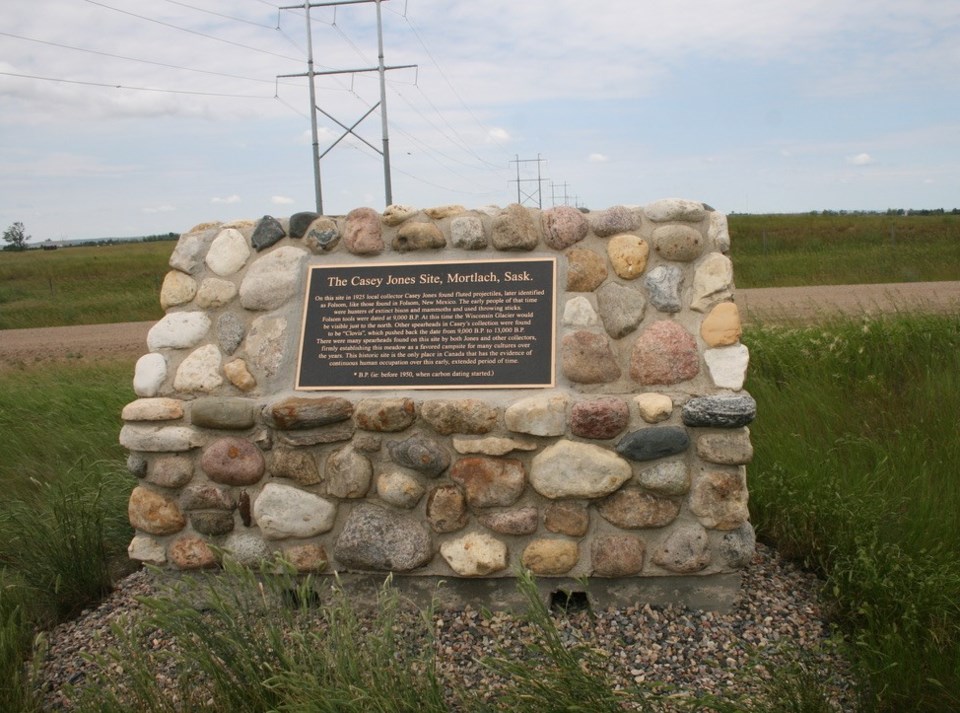MORTLACH — Just outside the Village of Mortlach lies a treasure of archaeological resources, hidden by layers of sand and generally unrecognized.
Known locally as the Casey Jones Site, artifacts collected from the site are evidence of early man’s encampments from 13,000 years ago to recent times.
Jones, an artist, carpenter and amateur archaeologist, found the arrowhead points at the site.
The Clovis points he found date back to the last ice age and are the first tools found extensively in North America.
In 1924 Jones found a Folsom point, only one of two ever found. The other was found in Folsom, New Mexico.
Archaeologists have been digging at the site intermittently since 1954.
A cairn recognizing the site and discovery of the 13,000 year old points was recently erected on the site by the Forbes family of Mortlach.
“Casey Jones found early man points out there,” said Vonnie Forbes. “Probably the (Trans-Canada) Highway went right through the site.
“We've been kind of trying to preserve the site and make it known.’’
The RM of Wheatlands designated the place a municipal heritage site a few years ago.
“We would like to have an interpretive centre out there. The site has been a campsite for thousands of years, one on top of the other.”
Funding for the cairn came from donations made on request at funerals for her late husband Bernie and his brother Larry.
“We’ve been working on something there for years. My husband started and we’re trying to keep it up?”
The extensive artifact collection Jones had is in the Glenbow Museum in Calgary and the University of Alberta. It took over two weeks to pack it up when the museum acquired it
His art, which includes paintings of Indigenous chiefs, is scattered from local residents to art museums. Jones died in 1968 of gangrene.
The late Bernie Forbes was also an amateur archaeologist and left a large collection of points that could be displayed.
The Mortlach area is rich in Indigenous artifacts: a medicine wheel at nearby Besant, a buffalo jump and sand campsite
A University of Saskatchewan Masters degree student in the 1990s wrote his thesis on the Mortlach people living between Mortlach and Riverhurst.
He concluded that Indigenous people had developed a meat packing industry, making pemmican from bison and trading it as far away as Minnesota.
The Casey Jones site is also the location of a PFRA forest site planted in 1941 to show farmers how trees will grow for shelter belts.
Ron Walter can be reached at [email protected]




